We’ve had a look at the history of some of the biggest manufacturers in the world over the last few weeks including Mercedes, Ford and VW and today we’re taking a look at Volvo. We’ll look at how the company started, the evolution of the company and their cars and how Volvo became the brand we know today.
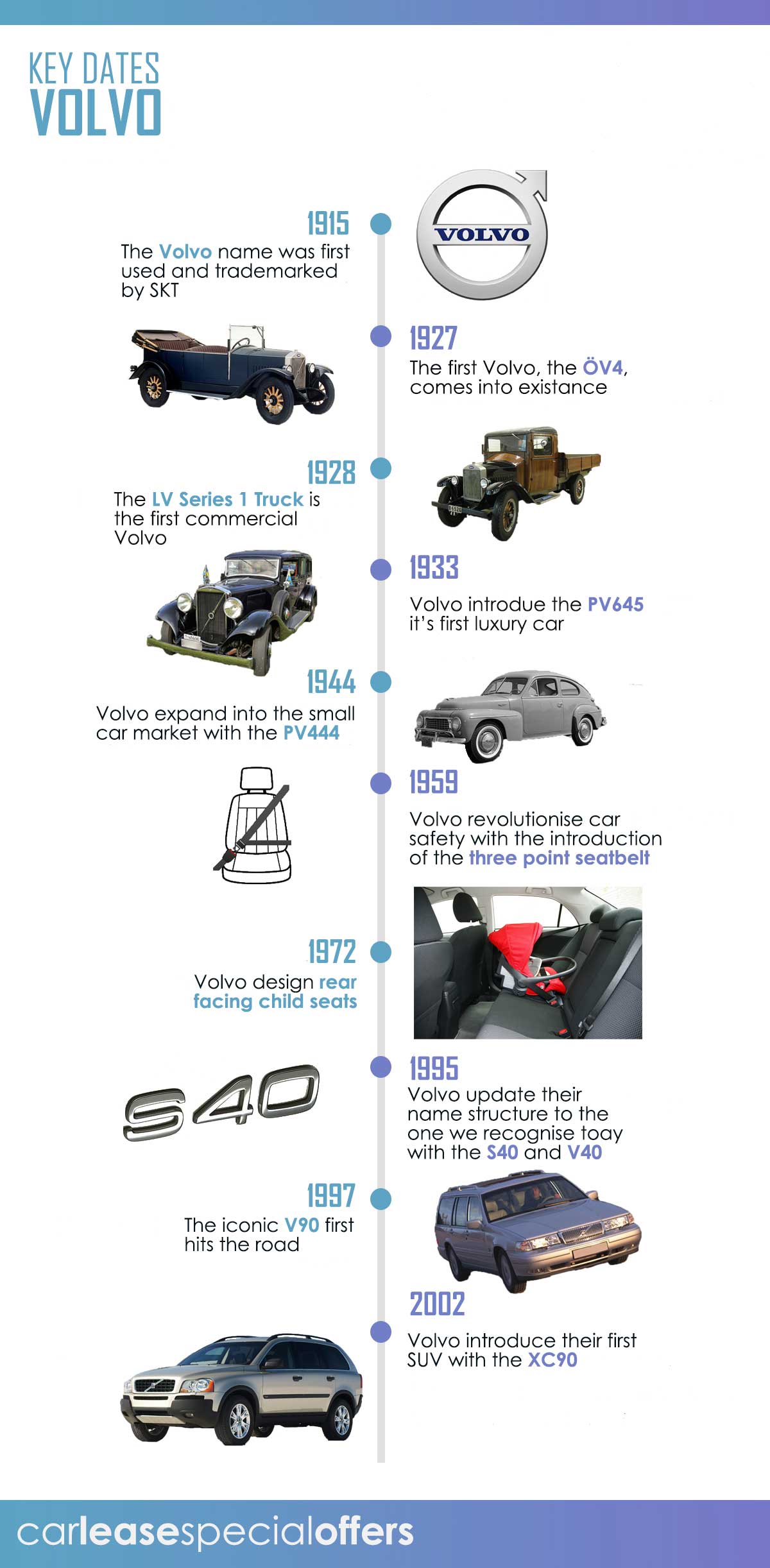
The History of Volvo
Volvo was trademarked in 1915 by the ball bearing manufacturer SKT. The name, which is Latin for I roll, was originally intended for a special series of ball bearings aimed at the American market. However, this idea did not come to fruition and the Volvo name remained unused for twelve years.
In 1927 Volvo came back to life with the development of the first Volvo car. Assar Gabrielsson and Gustar Larson were put at the helm of the Volvo brand, which remained a subsidiary of SKT, and they were responsible for the Volvo ÖV4.
Assar and Gustar were concerned that other car manufacturers were not making cars that were strong enough or safe enough for Swedish roads and the weather conditions, so they set out to produce a vehicle that was. Since then, the brand has gone on to be known for their safe vehicles, which is why they’re a favourite brand for families around the world.
In the next few years they went on to produce PV4, which was a saloon car, as well as the ÖV4 both of which were designed specifically for the Swedish climate and terrain, however these weren’t the commercial success that Volvos today are. Instead, it wasn’t until the first Volvo truck, the LV Series 1 in 1928 that the brand achieved financial success, with over 500 sold by the summer of the same year.
Volvo continued to develop trucks as these were the money makers for them during this time, and in fact there is now a separate division in Volvo Trucks. Despite the financial success of their trucks Volvo continued to develop cars as well to help the business have a more diverse and in 1933 they unveiled the first luxury Volvo, the PV645.
During WW2 vehicle production slowed and they focused on how they could serve the armed forces, which allowed them to expand massively. As Sweden was a neutral country during the war their business wasn’t as affected as brands like BMW, Citroen or VW, and so although the majority of their efforts were focused on supporting their nation during the war they were also able to continue vehicle development and in 1946 revealed the PV444.
The PV444 was Volvo’s first small car and was an instant hit, which lead to it being in production for over twelve years. This was the first Volvo to make the jump into the American market in the 1950s.
In the 1960s Volvo began to expand even more, opening a second production plant in Torslanda, Sweden, a factory in Nova Scotia, Canada, one in Belgium, and another in Malaysia.
They also continued to diversify the business, expanding their bus, truck aircraft and industrial vehicle divisions.
In the 1990s Volvo had a couple of failed mergers, first with Renault in 1993 and then in 1999 with Scania AB, a Swedish commercial vehicle manufacturer. However, the car division was sold in 1999 to Ford Motor Company.
11 years later Geely Automobile of China purchased the Volvo Cars brand from Ford, in 2010. At the time Renault also had stakes in Volvo however these were sold by 2012. Today Geely Automobile remains the owner of Volvo cars.
Volvo and Safety
Volvo are a brand that prides itself at being at the forefront of automotive safety and ever since their first ÖV4 was in the design stage. So, it’s little wonder that they have been behind some of the most innovative safety features that are used in our cars to this day.
Volvo and the Seat Belt
Volvo engineer Nils Bohlin was the designer of three-point safety belt that he introduced on the series production of the PV544 in 1959.
His design remains the basis of the modern seatbelt used in cars around the world and Volvo even waived its patent rights so that the design could be used by all other manufacturers to increase the safety of everyone. Since the first safety belt was installed in 1959 it’s estimated to have saved over a million lives.
Volvo for Families
Many of us associate the Volvo name with family vehicles, which is in part for their commitment to safety.
In 1972 Volvo designed a rear-facing child seat that was an industry first. This design was the first in the industry and was designed to spread the load and to minimise injury to the child.
In 1978 they then invented the world’s first belt positioning booster which allowed older children to travel facing forward but with increased protection and comfort and ensure that the seat belt was in the right place on their body.

Image Sourced: https://www.volvocars.com/uk/v/car-safety/safety-heritage
Volvo and Airbags
In 1991 Volvo introduced its side impact protection system which was an integral part of their cars’ designs. It included a very strong structure and energy-absorbing materials on the inside of the body as well as a cross-member in the floor and reinforced seats.
Three years later they added to this with the world’s first side-impact airbags.
In 1998 they then added an inflatable curtain, which is a concealed airbag in the headliner that rapidly inflates to help protect heads during a side impact or rollover. This was the first airbag system designed to protect both rear and front seat occupants.
Evolution of Volvo Cars:
We’ve taken a look at all the Volvos from the last 93 years and rounded up what we think were some of the best and most influential models below.

ÖV4
The ÖV4 was the first Volvo ever produced in 1927.
It was designed specifically for the Swedish terrain and climate, built on an ash and beech frame, covered with sheet metal and a four-cylinder engine. It also had an open top roof.
The model was only in production for two years and was succeeded by the PV651.
Image Sourced: https://www.volvocars.com/uk/about/our-company/heritage/heritage-models/0-ov4
PV4
At the same time as the ÖV4 Volvo was also producing their first saloon vehicle the PV4.
The wooden frame was insulated and covered with artificial leather rather than steel, and the seats could be converted into a comfortable bed for two. This was at a time when many cars were designed to be slept in, to avoid costly hotel fees.
A special version of the car was introduced in 1928, and this was also produced until 1929.
Image Sourced: https://www.volvocars.com/uk/about/our-company/heritage/heritage-models/1-pv4
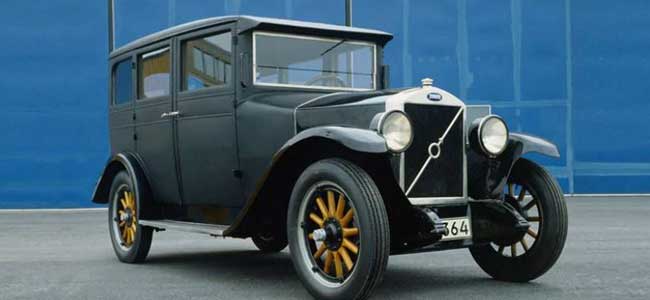
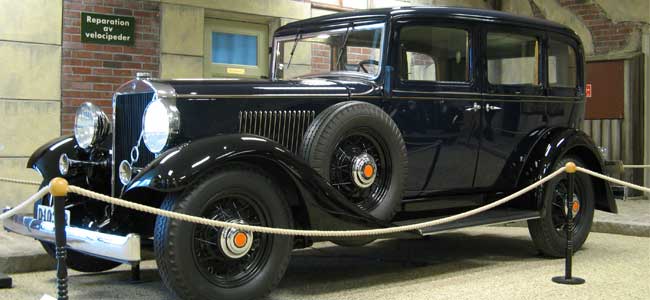
PV654
The PV654 was Volvo’s first entry into the luxury car sector, in 1933.
It was produced at a time when trucks were still Volvo’s main source of financial success and it marked a notable difference from the first Volvo models with several luxury features, although it did maintain the safety focus that Volvo was striving to be known for.
Image Sourced: https://commons.wikimedia.org/wiki/File:Volvo_PV_654_(1933).JPG
PV444
The PV444 was Volvo’s first entry into the small car market in 1944.
It was first sold at the same price as the ÖV4 cost in 1927, so was affordable as well as reliable.
This was the first Volvo to have a unitary body, without a separate frame, a laminated windscreen and there was clear American influence in the styling.
Image Sourced: https://www.volvocars.com/uk/about/our-company/heritage/heritage-models/10-pv444
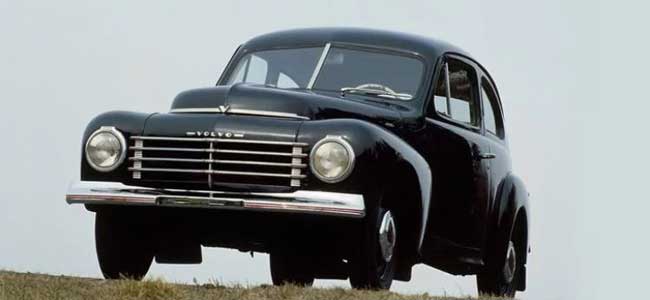
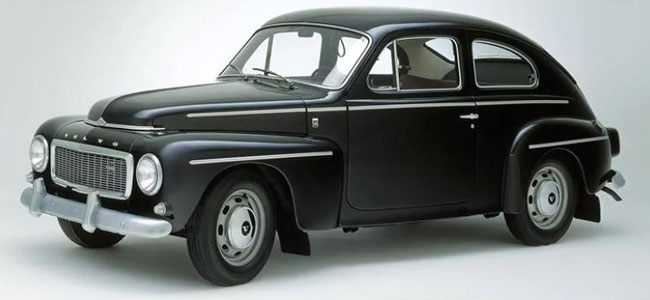
PV544
In 1958 the PV544 was launched. It was designed to be a more modern version of the PV444 from the 1940s and there were several changes including a larger, convex windscreen and larger rear window for increased visibility.
There was a new dashboard with a padded upper half, to improve interior safety. The speedometer had a red strip to show the speed as you accelerated, and the rear seat was more comfortable and spacious.
The biggest change though was in 1959 with the introduction of the three-point safety belt which is one of the biggest safety advances ever made for the car.
Image Sourced: https://www.volvocars.com/uk/about/our-company/heritage/heritage-models/15-pv544
Volvo S40 and V40
In 1995 Volvo launched their new model name structures with the S40 and V40.
The S40 was a compact family car, like the 850 that Volvo drivers had previously enjoyed, but its success was not just on the roads but in the races as well. Most notably in 1998 when Richard Rydell won the British Touring Car Championship in one.
The V40 was based on the S40 but was adapted to make it a compact estate. It offered the same levels of passenger comfort, safety and engine performance but in an estate body for drivers who were looking for a larger vehicle.

Image Sourced:https://www.volvocars.com/uk/about/our-company/heritage/heritage-models/59-s40 and https://www.volvocars.com/uk/about/our-company/heritage/heritage-models/60-v40
Volvo V90
The Volvo V90 remains in production today, over 20 years after the first V90 was introduced in 1997.
The estate was a replacement for the outgoing 960 estate and there were little differences between the two, instead it’s more likely that the few new features and colour choices were combined with the change of name to bring the model in line with their new model-name strategy with the S40 and V40 in 1995.
Today the V90 is a spacious and comfortable estate, with a large boot and comfortable seats for all. If you want to see current leasing deals on the V90 just click here.
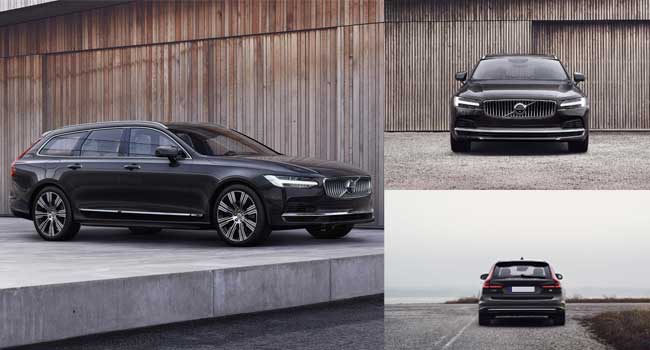
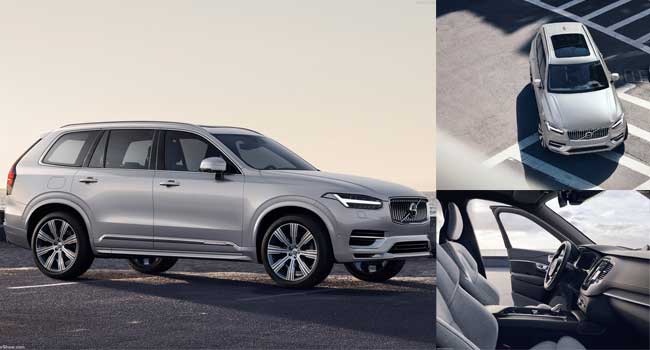
Volvo XC90
In 2002 Volvo expanded into a new market with their first SUV the XC90.
The mid-sized crossover SUV showcased the best of Volvo, with its innovative safety features, luxury yet family friendly interior and capability to handle a range of terrains.
To take a look at today’s model just head over to our XC90 page which has a little more information on all the models available as well as the current leasing deals.
Volvo Today:
Today Volvo remains at the forefront of vehicle safety and continues to create innovative and cutting-edge technology for driver and passenger safety. They are also expanding their range of electric and hybrid models as we all look for alternative, greener options.
Click here to view all the Volvos that are currently available, and you’ll be able to see our top leasing deals on them as well if you are looking for your next car.









Leave a Comment